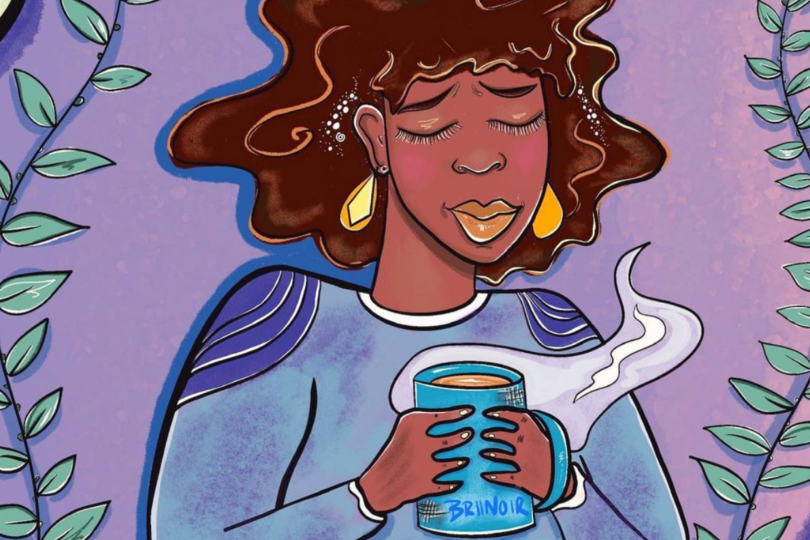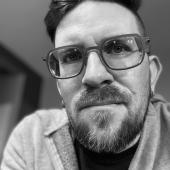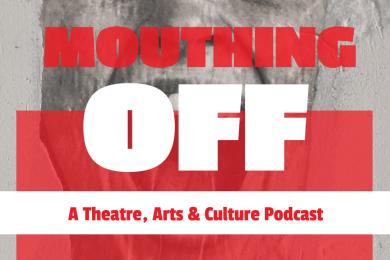Springboard goes further with direct artist support.

I've been interested in guaranteed income since reading about it a few years ago. There are a lot of benefits to this type of program as we saw through the massive redaction of child poverty with the child tax credit payout that happened in 2022. So when I found out that not only had Springboard done a pilot for guaranteed income for artists, but that they were doing a second round, I had to know more. Kicking off our new website seemed like a great time to highlight Laura Zabel's (Executive Director) work with the Springboard team on making a difference in artist's lives.
DR: What inspired the creation of the Guaranteed Minimum Income for Artists Pilot?
LZ: The pandemic really exposed how little safety net there is for self-employed people and contract workers, which includes a lot of artists. At Springboard we tried to move as quickly as possible and create as many emergency relief resources as possible. We learned a lot from that crisis work and it strengthened our focus on changing systems and policies that would actually address economic justice and make future emergency relief less necessary. For us that has meant looking for ways we can support policy changes (like better access to healthcare and small business support) that would improve things for artists. It also meant seeking out new models and tools that could directly address economic conditions for artists, especially artists who have been harmed and extracted from by our existing systems.
DR: Can you tell me a little about the development process? How did the initial vision compare with the reality of what you were able to achieve in the first pilot?
LZ: We have been really lucky to benefit from the example of guaranteed income pilots happening across the country to design the pilot. Specifically, the City of St. Paul Office of Financial Empowerment provided a lot of help and mentorship as we were developing our program. From the beginning it was important to us that this pilot for artists was aligned with and informed by the broader movement for guaranteed income and economic justice. So we really designed our program so that it could sit alongside the People’s Prosperity Pilot, which is the City of St. Paul’s guaranteed income pilot. We knew we would have limited resources for the pilot so we made the choice to focus our pilot on artists in Frogtown and Rondo. We selected the participants at random from the pool of artists who had received Emergency Relief Fund support during the pandemic. Over 85% of the 25 participants identify as Black, Native and/or People of Color. The participants are painters, sculptors, hip hop artists, visual artists, singers, composers, teaching artists, culture bearers, performers, theater makers and writers.
The research component of the pilot is also important to us, because one of our goals is to demonstrate the impact that guaranteed income can have for individual artists and also to look at the community and neighborhood impact of supporting culture makers in this way. This means that we have research questions that are very similar to a lot of other guaranteed income pilots and also some specific research questions related to artists. We’re lucky to be working with the University of Pennsylvania Center for Guaranteed Income Research on that part of the project.
...it’s really not that hard to give people unrestricted money...
DR: What were some of the biggest challenges in getting the pilot up and running? And were there any unexpected challenges once it was up and running?
LZ: Two things I want people to know are: 1) the team at Springboard put in a lot of work getting this project up and running and getting artists set up, connected to benefits counselors (to make sure participants understand how the guaranteed income may impact other benefits they may be eligible for) and helping folks understand the program; and 2) (and this mainly for any funders who may be reading this) it’s really not that hard to give people unrestricted money and trust that they know best what they need to make their lives more sustainable. The idea behind guaranteed income is beautifully simple: people are the experts in their own lives and eliminating the bureaucracy and hoops that most safety net programs have is more effective for everyone involved.
A challenge that I think is specific to artists with guaranteed income is that, in the arts, we are so used to everything being competitive that some people are really challenged by the non-competitive nature of this work. Guaranteed income isn’t a grant, it’s not an award, there’s no expectation or requirement to produce a particular project or kind of work. We’re finding through the research that this is liberating for a lot of artists who are so used to being pushed into a particular type of work or having an expectation of addressing a specific issue in order to receive support. We’re finding that artists are making a lot more work for their own community and neighborhood and that they are able to explore and try new things. Something I really believe about the idea of guaranteed income is that it values people for their many different potential contributions to our community and not exclusively for their ability to generate financial return. I think that resonates for a lot of artists.
DR: You've launched a phase 2 which is fantastic, how do you see the program evolving in the future?
LZ: We’re really excited to be able to deepen and broaden the pilot in this second phase. The biggest new thing is that we’ve added a pilot in Otter Tail County that focuses on rural artists. We’ve had an office in Fergus Falls for 12 years now and we see so many points of connection between rural places and underinvested urban neighborhoods. We’re excited to be able to have this program up and running in both locations and believe there is a lot of opportunity for rural-urban solidarity and collaboration. We also expanded the St. Paul pilot to include more artists in Frogtown and Rondo. So between the two locations we have 75 artists in the program now. So it’s still very small but it’s three times bigger than it was in the first phase!
DR: As I understand it the program is primarily funded through private donations and foundations, how does that impact the sustainability of the program for the long-term?
LZ: One of our biggest learnings from the broader community of people working on guaranteed income is that all of the guaranteed income pilots that are happening across the country right now are designed to be *pilots* that prove that unrestricted cash transfers are an effective and useful tool for addressing economic justice. These pilots are meant to create a proof of concept that will help move state and federal policy towards more equitable and direct support. A lot of people think a national guaranteed income seems unlikely but the recent Child Tax Credit was essentially a guaranteed income program for parents at a national scale, so it’s possible. We’ve been working with a group of folks advocating for a statewide fund in Minnesota to support more pilots in more communities. Minnesota is really well positioned to do this work at a statewide scale because there are so many local pilots here like the City of St. Paul and the International Institute, which has a pilot for refugee families, and leaders like Mayor Carter who is the chair of the national organization Mayors for a Guaranteed Income. We want to make sure artists are included in these kinds of policy developments–both as potential beneficiaries and as important allies who can bring creative skills to narrative change efforts and other advocacy.
DR: Have you seen the program influencing the larger conversation around Universal Income, and if so how?
LZ: One of the most exciting parts of this work was a project we did in partnership with the City of St. Paul’s Office of Financial Empowerment called Artists Respond: People, Prosperity and Place. Through an open call we worked with 5 St. Paul artists who designed projects about the impact of guaranteed income and the conditions that create a need for this kind of support. The projects are really beautiful and moving and are such a great example of how artists can bring creative thinking to something that might seem like a kind of wonky or complex idea and help create ways for people to connect and understand that idea in a really human, empathetic way. We’re going to do more of this narrative work in phase 2 and will have more information about that process for artists who are interested in getting involved soon. You can see all the projects and read more about our guaranteed income work at: https://springboardforthearts.org/guaranteed-income/
DR: What are some ways we as community members can support this program’s success either directly or indirectly?
LZ: There are a lot of ways to engage with the broader community around guaranteed income – the Guaranteed Income Community of Practice and Mayors for a Guaranteed Income are both good places to start if you’re interested in learning more or getting involved with broader advocacy for guaranteed income policy. You can view the artist-designed narrative change projects and share them with your networks and read and share the report we just published about the findings from the first phase of this work.
Beyond the specifics of guaranteed income, I think the values of this work, especially non-competitiveness, valuing people for their contributions to community (and not only for their economic impact), and supporting cultural producers and their ability to breathe are things I’d love for us all to spend more time reflecting on and thinking about how to work those ideas into all kinds of projects.
And, of course, if you’re in a position to support Springboard directly, we’d welcome that, too.
DR: Were there any surprises or unintended consequences (challenges or opportunities) that resulted from the initial pilot? And if so how did that impact this second phase?
LZ: In some ways I think the biggest surprise was how well guaranteed income works. We have such a tendency to think things are going to be more complicated than they are. So that understanding that this relatively simple idea could have such a big impact definitely influenced our desire to continue to do this work and to expand it in the second phase.
We take the “no strings attached” principle of guaranteed income really seriously. In the first phase, we might have even over-corrected for that idea. We’re interested in building in some optional resources in the second phase so we can work with participants to provide connections to additional resources, like debt refinancing, homebuyer preparation and small business assistance, if they want those things.
DR: Finally, Springboard has had a massive positive impact on the Twin Cities and greater MN arts community over the years. I would imagine this is one of the highlights of that impact as it has such direct and tangible results on an artist's life? Where do you go from here (without revealing all of the secret projects of course)?
LZ: Ha! We never really have big secret projects at Springboard, in part, I think, because an important way that we design new programming is by talking to people about our ideas and getting input from artists, partners, community members and leaders in other fields. And also because if I’m excited about something I can’t help talking about it! Two things we’re working on right now that are really exciting to me are: 1) an increased focus and body of work around public policy efforts in Minnesota and specifically supporting and working alongside groups advocating for systemic change that would benefit self-employed folks and contract workers. A good example of this is the current proposal to expand access to MNCare (https://mncarenow.org/); and 2) we’re working to start a new national coalition of local, artist-supporting groups to share resources and build solidarity across the country. Both of these projects are a direct result of what we’ve learned from the last few years and the urgency we have to support system and policy change locally and nationally.
Learn more about Springboard and all the work they do for MN artists over at Springboard for the Arts.
Image credit: 'Exhale' part of a coloring book created by Briauna Williams as part of the first pilot.




